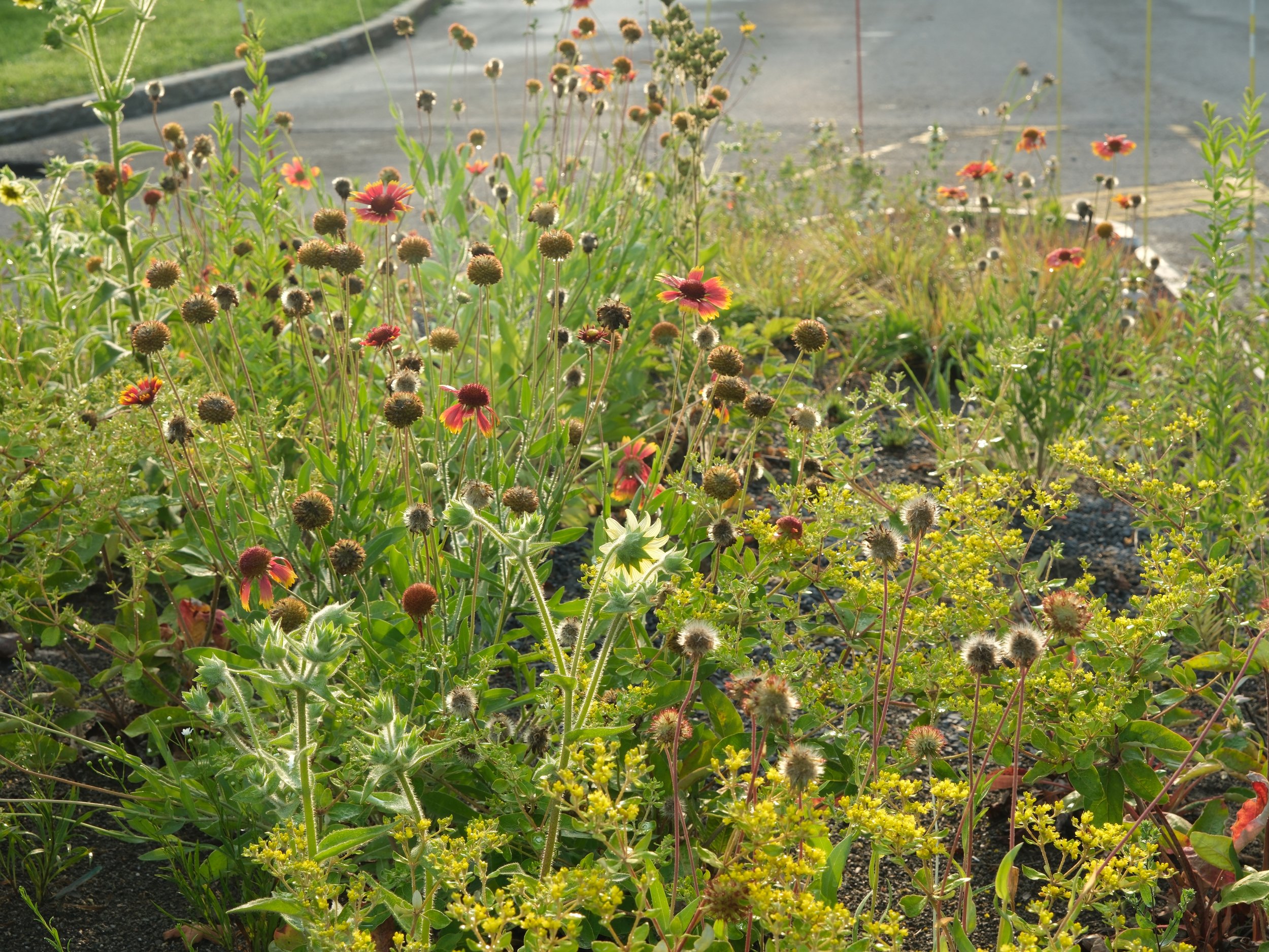Sand Patch
Can deliberately harsh site conditions and an expanded concept of native plants enable plantings to thrive within the harsh, forgotten spaces of our urban built environments? Can low maintenance plantings be ecologically vibrant and culturally acceptable? Sand Patch says: Yes.
Here’s the background. This urban site is in a flood plain at the foot of one of the Finger Lakes. Mid-century road construction had elevated the site above any direct interaction with its floodplain context. It sat adrift in concrete and asphalt. We worked with the City of Ithaca, New York, to remove the site’s lens of topsoil and added 10-18” of sand on top of a preexisting bed of crushed gravel.
By leaning into the harshness of the site, we have initiated a planting that is vibrant and biodiverse, while also requiring minimal management. Hot and dry, the sand keeps weed pressure low. The mostly regionally native plant species, selected for their drought resilience, have thrived. Monarch butterflies and various species of bumble bees, solitary bees, and ground nesting wasps have been observed nesting or feeding on site. As a bonus, the site is a sponge, absorbing any rain that falls on it, even during deluges that have dropped 1” in 15 minutes.
Patchy, a bit chaotic, always changing, with plants seeding and moving around—and yet beautiful and abundant and tough—Sand Patch has been an opportunity for us to continue reconsidering the potentials of urban plantings.
Sand wasp nesting at base of Monarda punctata
Prior to planting, we removed all soil from the plants. Eriogonum allenii on L, Eurybia specabilis on R
Site preparation
Site before the addition of sand
Project on installation day
Previous site condition
One year after installation













